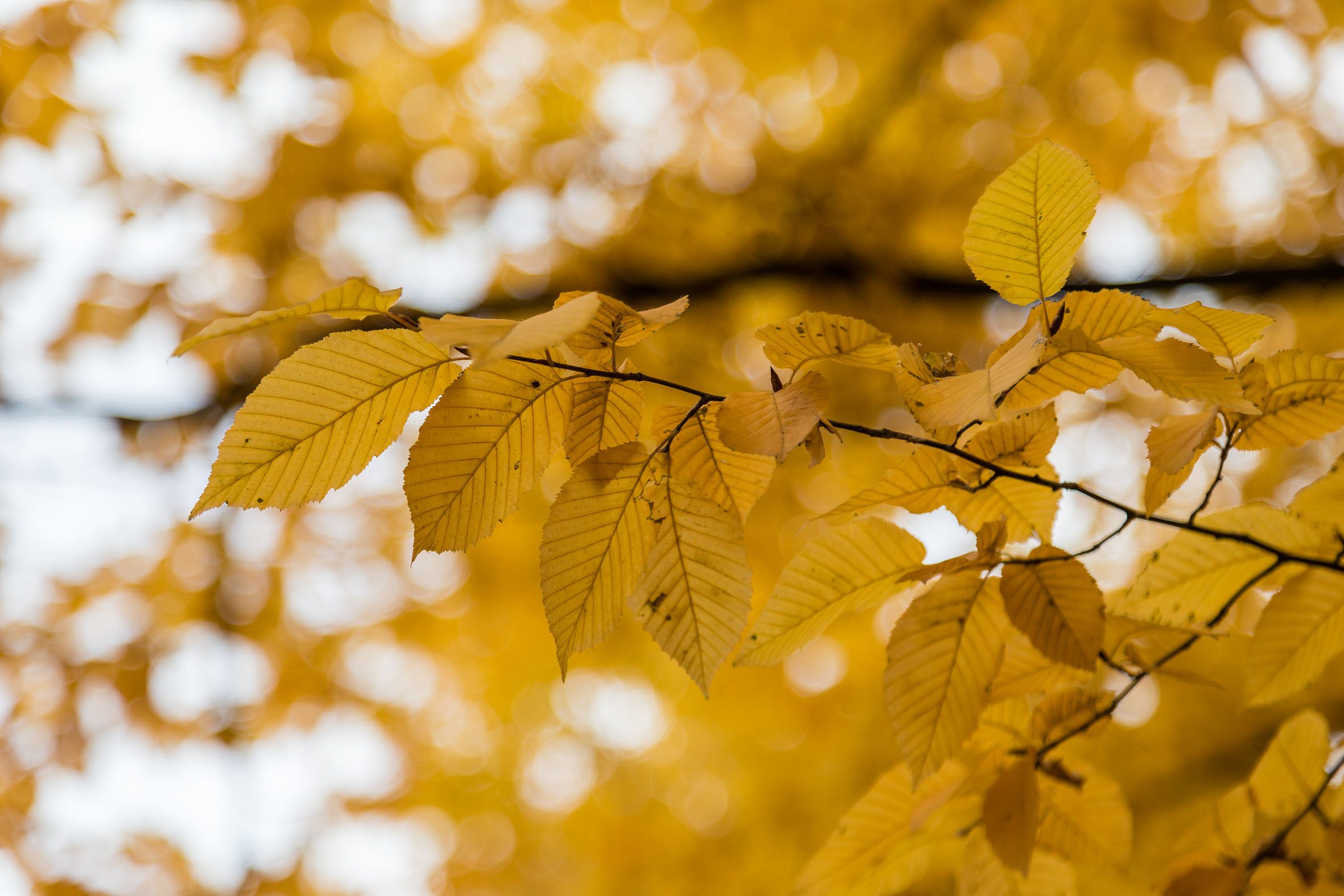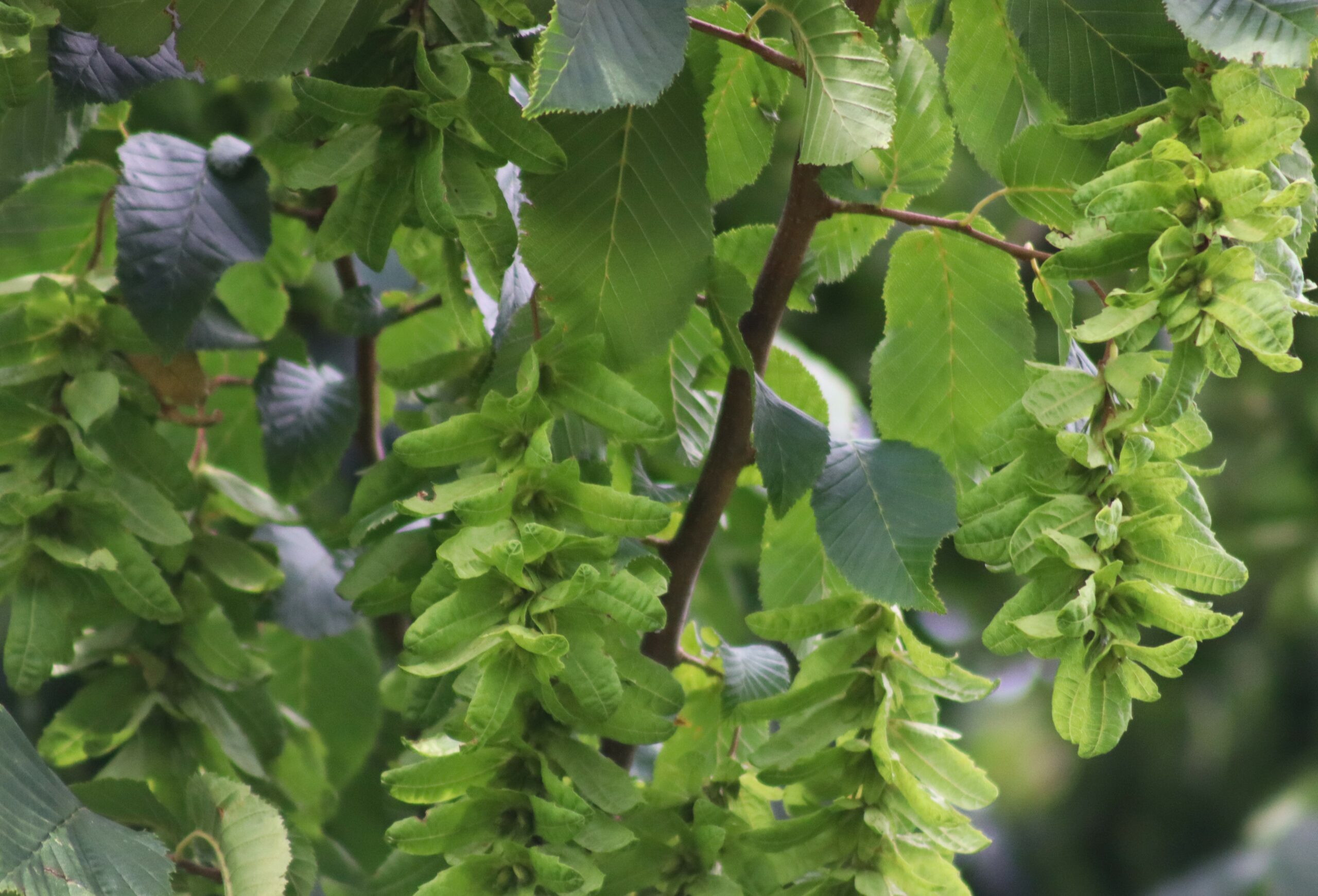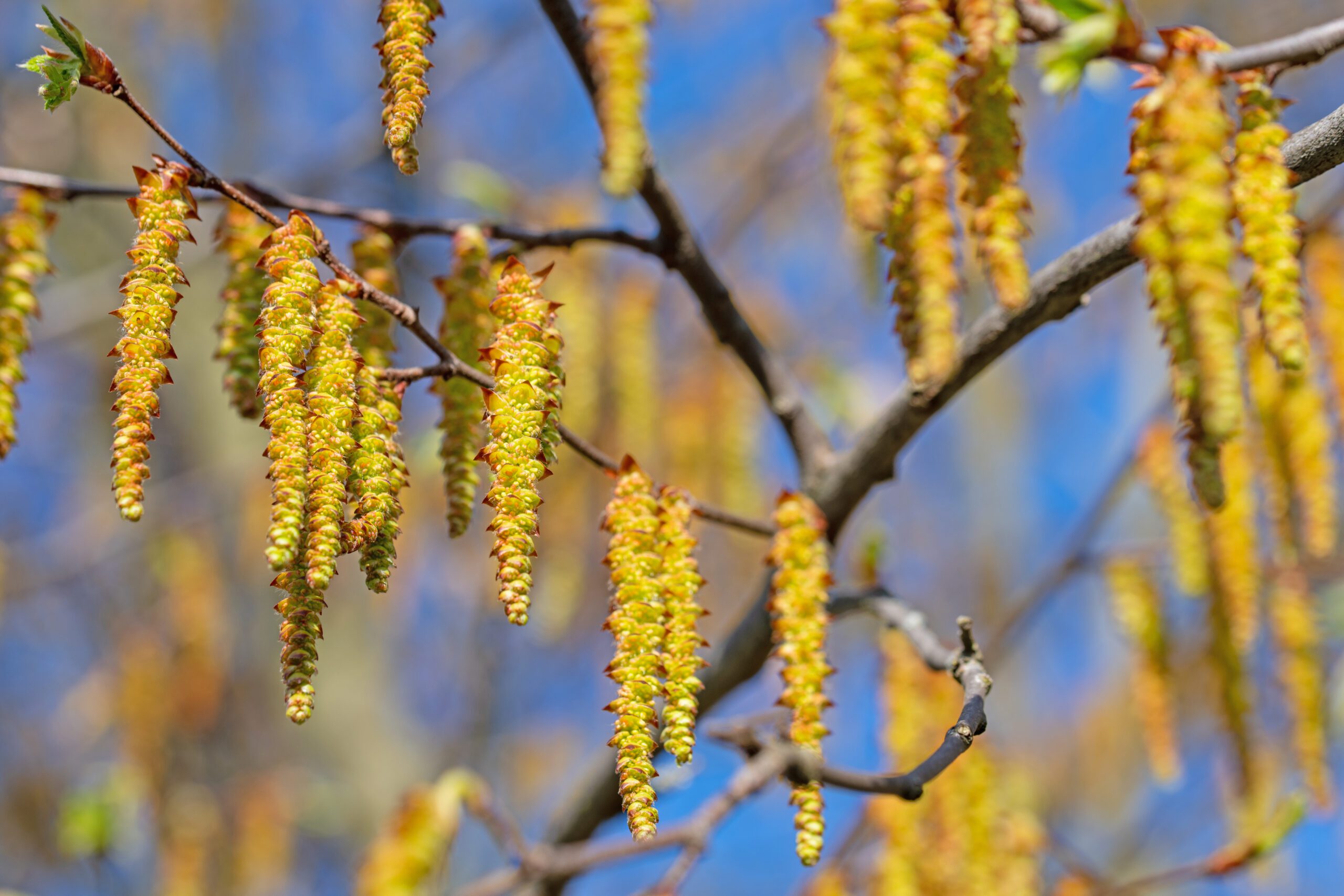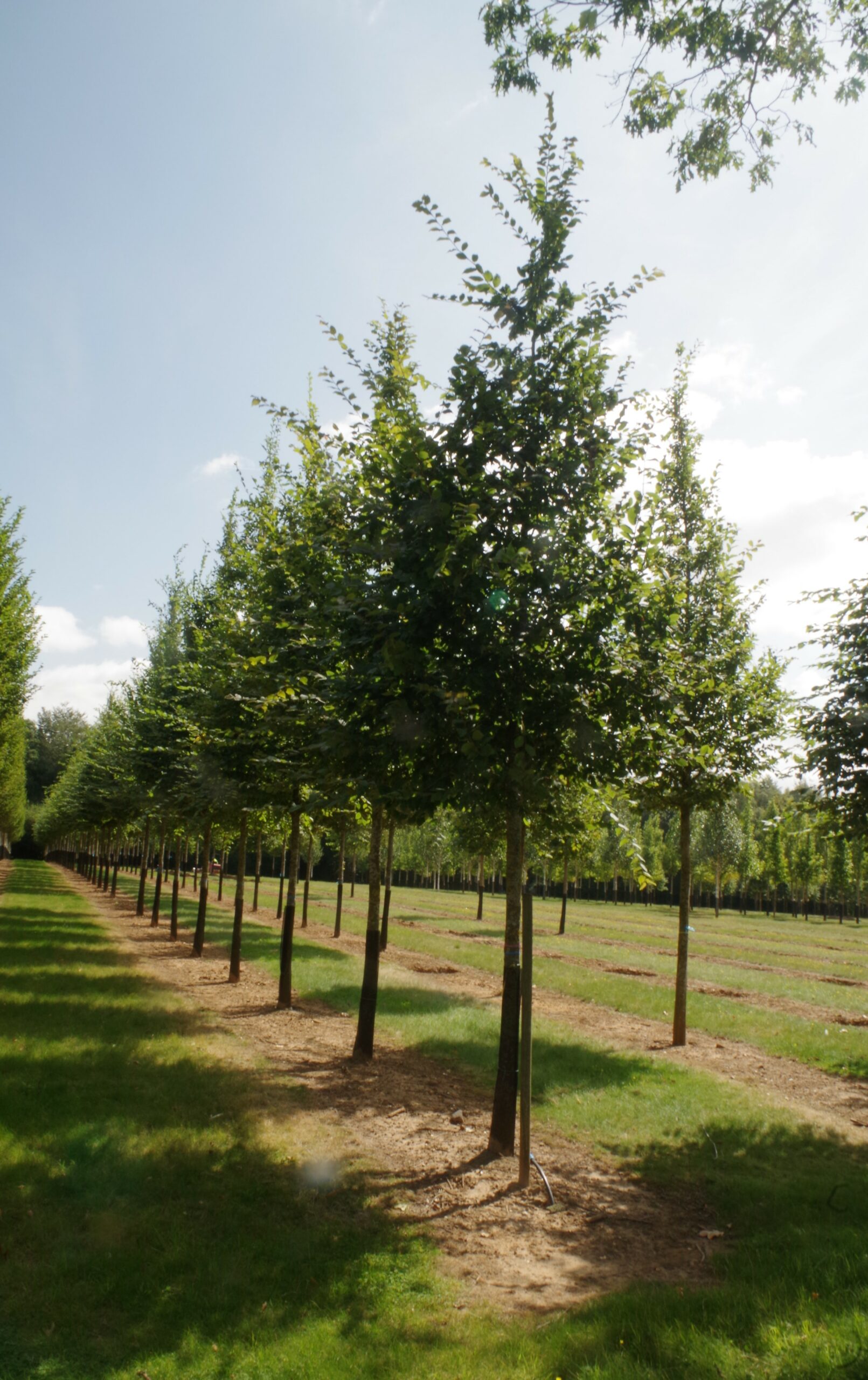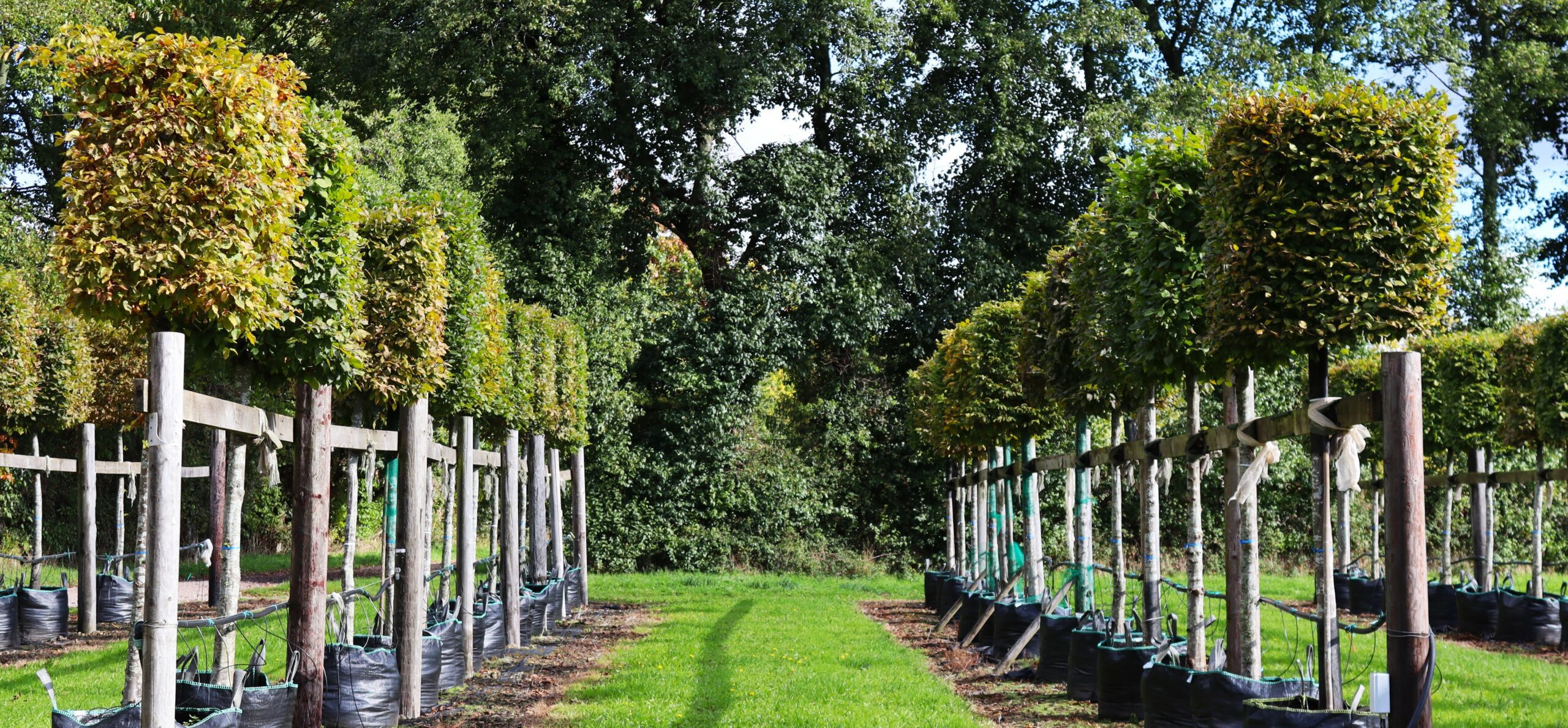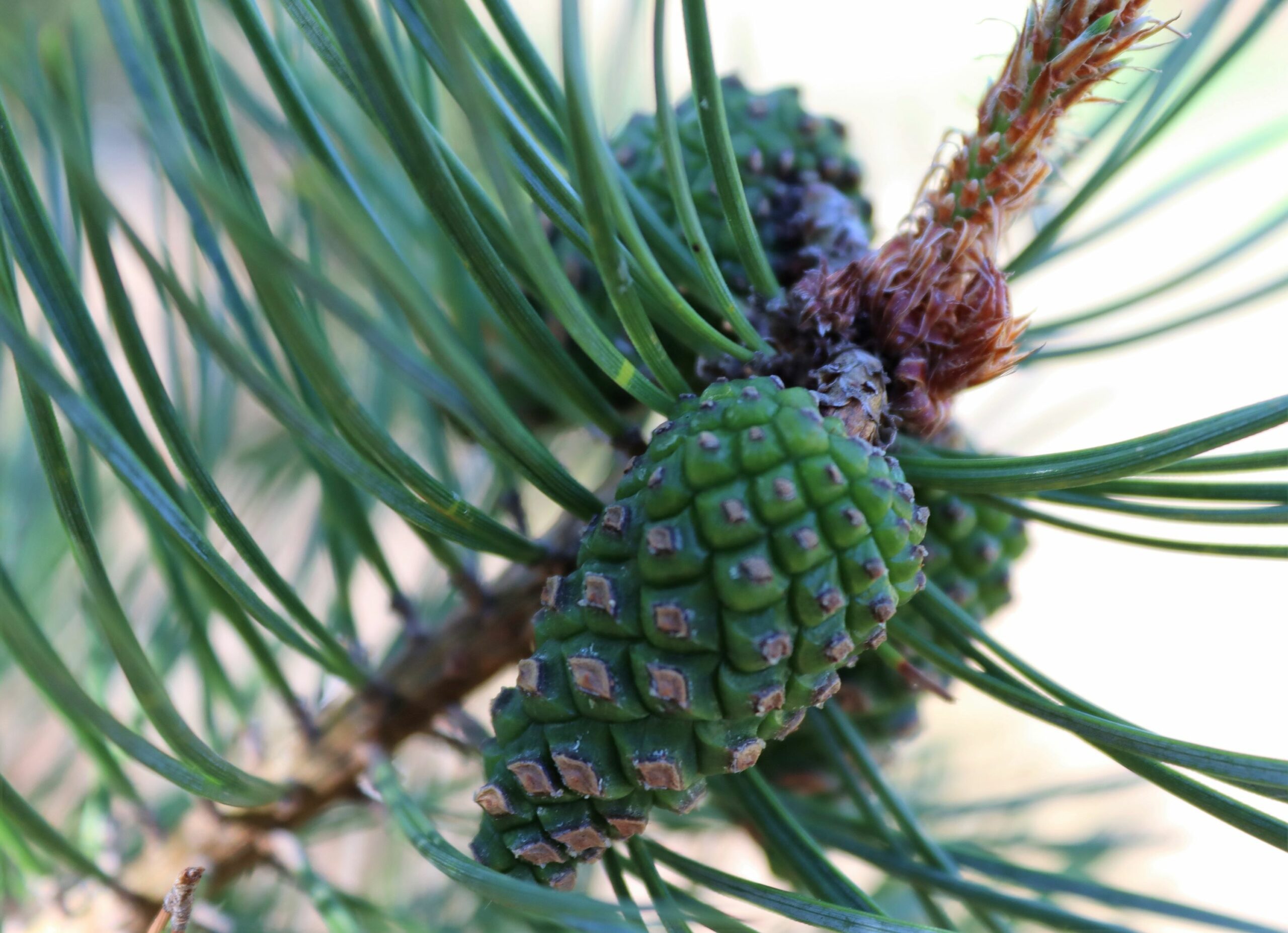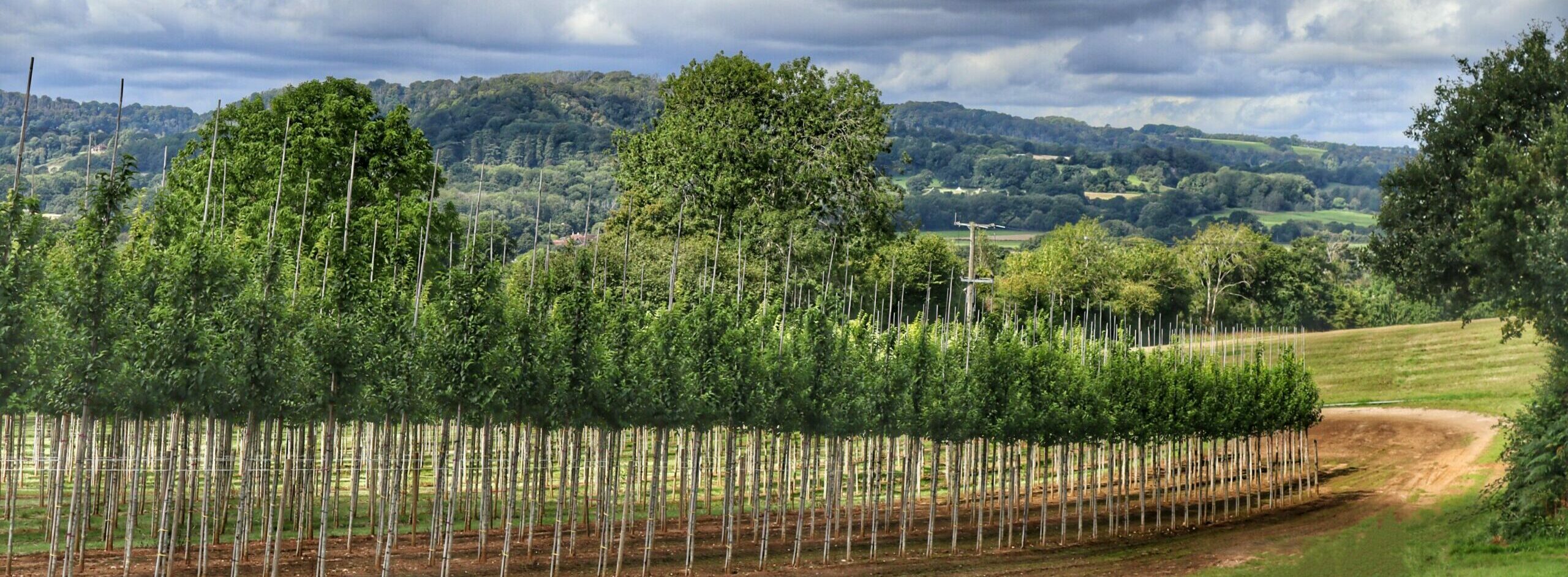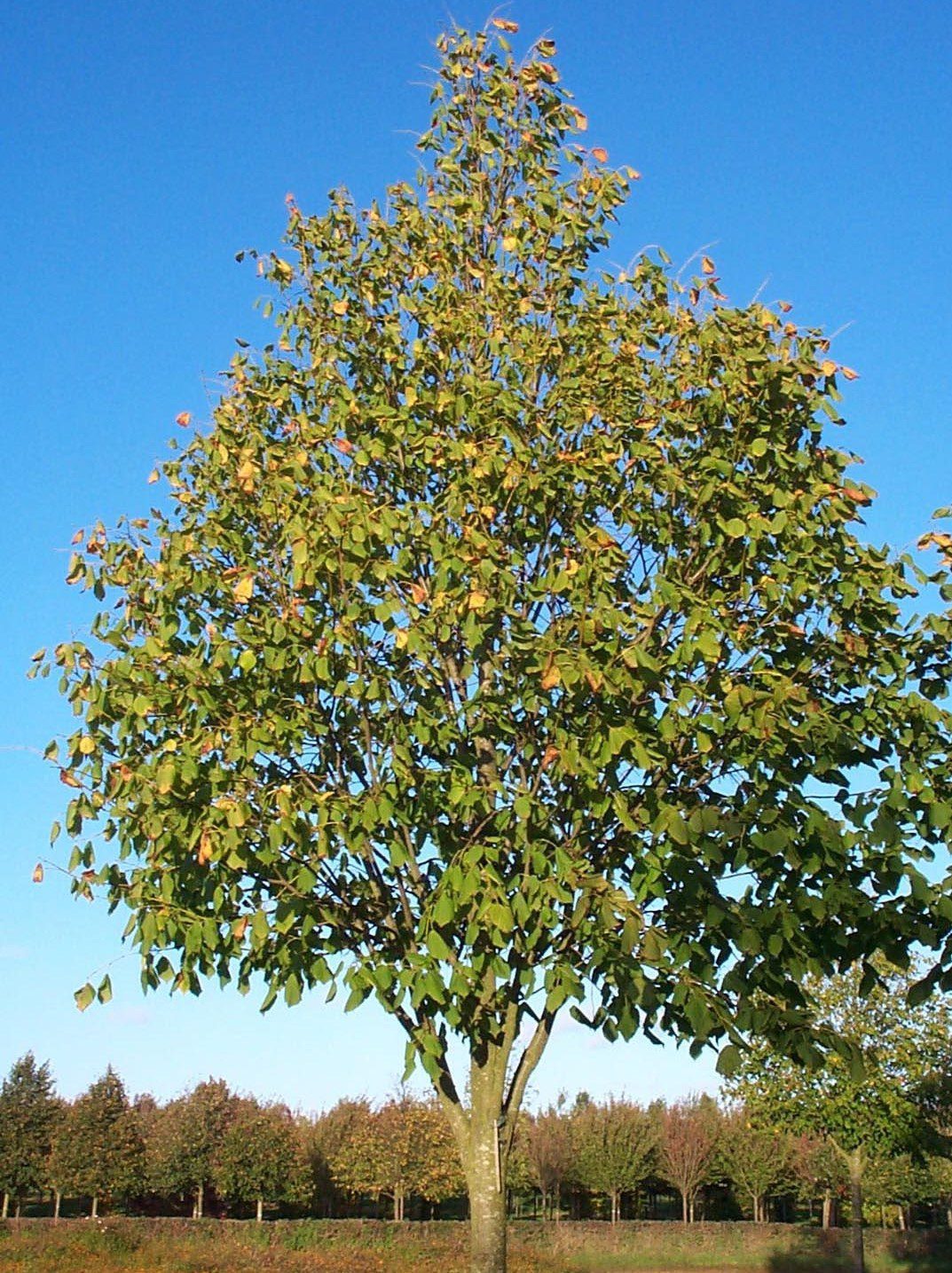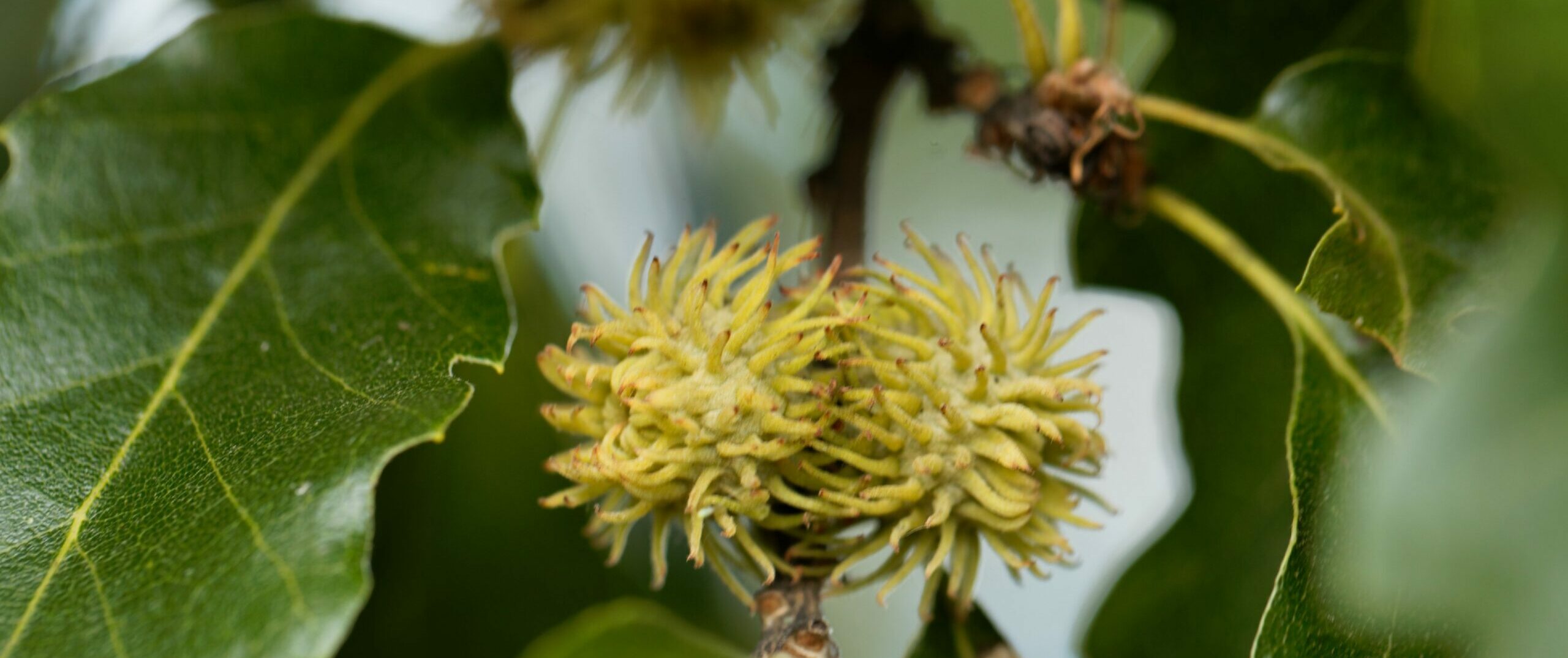Tree Information
Specialities
Tolerances
Wet Soil: High
Dry Soil: High
Lime: High
The Hornbeam stands as a cornerstone in many of Britain’s ancient woodlands, thriving even in challenging soils like clay and chalk. Its deciduous leaves enrich the soil when they fall, enhancing its fertility over time. While it can endure short bouts of waterlogging, it might struggle in overly dry, sandy soils. With roots primarily within the top 300mm of soil, careful consideration is necessary when selecting planting sites and ensuring proper root space. For optimal growth success, opt for rootballed specimens from our field grown production during their dormant phase.
Carpinus betulus showcases a fluted trunk cloaked in smooth grey-green bark. Its malleable nature allows for artistic pruning, crafting, unique, twisted or windblown forms.
In spring, its foliage opens in a vivid lime green, marked by deep veins and distinct ripples. As autumn approaches, leaves transition into golden yellows tinged with butterscotch. Come winter, leaves become a rich treacle hue and remain on well pruned trees.
Adaptable and versatile, the Hornbeam suits a myriad of landscape designs. Left to flourish in expansive parks or estates, it can stand grand for over two centuries. Yet, with its strategic pruning, its potential is limitless for innovative landscaping. Consider our field grown Archways for grand entrances or the neat, geometrically pruned Carpinus for a modern urban aesthetic.
For a serene outdoor dining experience, plant 6 Parasol Carpinus in rows of three. These trees with their intertwining canopies, create dapple shade effect, while their clean trunks exude a minimalist elegance.
Visit our Useful Resources for in-depth guides
Discover guides to help you with specifying your trees, caring for your trees and understanding the weights and dimensions of trees.
Useful ResourcesSize
Large
10m high x 6m wide after 25 years
Environment
Ideal for roadsides and central reservations.
Canopy
Densely branched conical canopy whilst growing. Through maturity it develops into a bottom-heavy pear-drop shape. Accepts pruning extremely well, allowing crown raises and thinning works for urban requirements.
Foliage
Lime green foliage marked by deep veins and distinct ripples. Becomes butterscotch yellow in autumn and a rich treacle in winter. Remain on the tree well into the season.
Resilience
A resilient tree that thrives in shaded areas. It can flourish in various soil types, from chalk to clay. Withstands unfavourable planting conditions and can adapt to different pruning regimes.
Available As:
Semi-Mature
Make an Enquiry
Enquire below and speak to one of our expert team. For trades only, for general public enquiries click here.
Find Trees For Your Project
View Our TreesSpeak to a Member of Our Sales Team
Make an Enquiry
